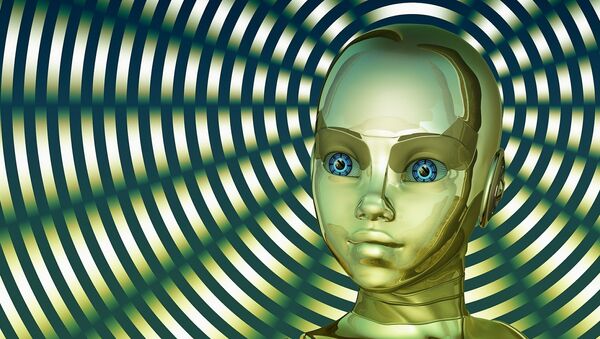Sputnik: Big companies, including SAP are currently testing various AI-driven technologies. Is artificial technology a threat to human workforce, or is it there to help people?
Mike Kemelmakher: I would say that to some professions it’s a threat. But, I would also say that these professions will not help us to scale tasks that need to be done, as my colleague mentioned during the session. Human population is not growing fast enough in order to fulfill all these tasks by humans. So, when it comes to very simple analysis or detection of something – no matter how humans will help, information accumulates way faster. Because when we didn’t have digital storage media, when we didn’t have cheap cameras, cheap microphones, we were accumulating information way slower. It was expensive and it was not available, so humans were kind of ok.
Now, when storage of information is very cheap and you can store terabytes and petabytes of data. Cameras became cheap, so you can record millions of hours of video. And it’s not feasible to process all that information for humans. That’s why artificial intelligence and machine learning helps to deal with all this information. So, I think it actually helps and augments humans, rather than actually replacing them. Humans will focus more on intelligent tasks, where decision-making is required. And also, there is aspect of how much we explain what the machines are doing. So, in many situation we will prefer humans over the machines, because human actions are more explainable.
READ MORE: By the End of This Century Robots Could Become Self-Aware — Futurist
Sputnik: AI is being actively used in machine vision applications, and your company is currently working with this technology. What are the most interesting uses of such technology?
Mike Kemelmakher: We are making a lot of progress, actually. Latest technologies are in the areas of detection and classification of objects for different purposes. It can be for surveillance and security, it can be also for visual inspection, like when you have a production line, and you have cars, where it’s possible to fully automate this with machine learning, also when it comes to video search – this is a very high-demand and important area. You have millions of hours of video and you need to find in this video a very specific object. Machines can watch video with rates which are by orders of magnitude faster than humans. I’ll give you an example: a recent solution that SAP released to customers. The solution is focusing on detection and counting of advertisements and brand visuals in video content. This is a very important subject, because brands invest a lot of money in what they call indirect advertisements, or product placements. Now, when a lot of money is invested, there is a need to estimate return of investment, and one of the qualifiers is the size and duration of this exposure on the screen. And this is a relatively simple task: you need to review this video, you need to find logotypes or banners, measure their size on the screen, and how much time it was on the screen.
READ MORE: Fears of 'Robocalypse' Are Overblown – IEA Report
Sputnik: You took part in today’s discussion as a speaker. What are your impressions about Skolkovo and this year’s conference?
Mike Kemelmakher: I’m impressed on the general level with how Skolkovo evolved. I participated in such event three years ago and the area was kind of in the beginning of development, it was really small. So, today, when I arrived, and saw all the buildings and all the development around here – it was very impressive.
The views and opinions expressed are those of the speaker and do not necessarily reflect Sputnik's position.



